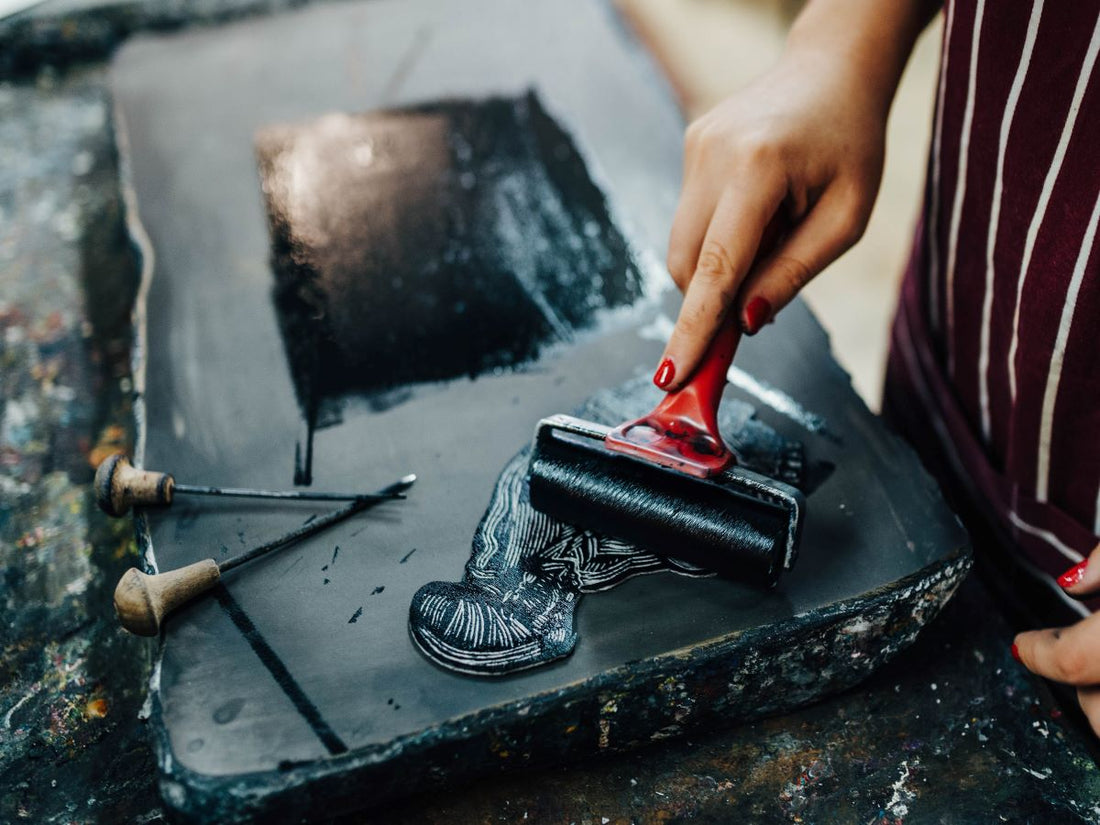John Ndevasia Muafangejo was born on the Angolan side of “Ovamboland” in 1943 and grew up in his father’s kraal. His childhood was characterised by the traditions of the Kwanyama people. His father had eight wives and 18 children. John enjoyed a happy childhood tending cattle and goats with his brothers, as was expected of boys at the time.
After his father’s death his mother moved with John and his siblings to her family across the border in former Southwest Africa. At the age of 12 he learnt to read and write, the only member of his family to do so. He remained very close to them throughout his life. In 1985 he said, “I am the only educated one, so the responsibility is mostly mine. I cannot go overseas anymore, there is no money.” (Levinson 1992, p. 8).
From 1957 John attended the missionary schools at Epinga and Onamunama, followed by St Mary’s Anglican Mission School in Odiba where his artistic talent was recognised. In 1968 the Anglican Church arranged for him to train at the renowned Rorke’s Drift Art School in Natal in South Africa. The Arts Association of Namibia gave him a bursary.
In 1969, John Muafangejo’s work was first shown at exhibitions in South Africa and Britain. The following year he had his first solo exhibition in Namibia. From 1970 until 1977 he taught art at his former school in Odiba and also spent another two years at Rorke’s Drift. In 1977 he moved to Windhoek. As his studio he used a room made available to him by the Anglican Church in the suburb of Eros.
Muafangejo’s international breakthrough came in the eighties when he exhibited at the Commonwealth Institute in London. Art critic Edward Lucie-Smith rated his linocuts “consistently the best of all the modern African masters.” (Levinson 1992, p. 16) Various historians expressed the same opinion. Invitations to other exhibitions and write-ups on his work followed.
“His formal school education was rather limited, but nevertheless he was an interesting person, very sensitive, He thought deeply about various matters and expressed and questioned them through his art.” Says Annaleen Eins, a former president and long-term associate of the Arts Association.
Most of John Muafangejo’s linocuts are autobiographical. They often have some information or even lyrical and humorous commentary written into them. His work is known for its graphic quality and authentic artistic expression. A recognised artist during his lifetime, he said himself that the themes of his work reflect his emotions and experiences. He also drew inspiration from radio news, his religiousness, poems and traditional music.
In an interview shortly before he passed away, he said: “My themes, I do dreams, look around me, and read the newspaper ... when I dream I dream something [in particular] and then in the morning I begin immediately before I forget. That is what I mean – I dream some pictures.”
John Muafangejo died of a heart attack in 1987 at the age of 45. He had yearned for Namibia’s independence but did not live to see it happen. One of his dearest wishes, however, came true one year after his death. The John Muafangejo Art Centre was opened. It offers art classes for aspiring artists with a disadvantaged background. The project has been highly successful. His legacy remains ever-present in Namibia today.
“He had a lot of depth and his own struggles, but he had an incredible way of looking at the world. Very honest. Almost childlike. Unpretentious and authentic” notes marketing strategist, Chrisna Basson Wessels. Wessels felt it necessary to create broader awareness of John Muafengejo. And so, naturally, she created this range of Books, T-shirts & Tote bags, ensuring that the voice of this legend will indeed never die.

Another Namibian, who celebrates Maufangejo’s work, Lize Ehlers voices, “He was a genius. John Muafangejo has put Namibia on the map with his vivid linocuts and his art is a world class representation of brilliance. He will remain one of Namibia’s greatest visual artists ever”. She proudly acclaims his work with the “I am John” CD, a celebration of his life in song - a testimony of the Namibian creativity and community.

The bequest of John Muafengejo, that will live on forever.
Written by: Christiaan Jacobie & Marlene Orffer

